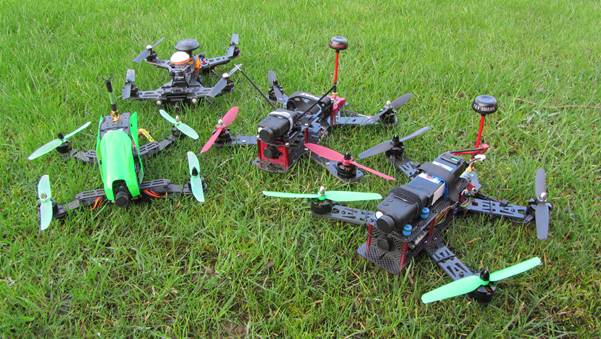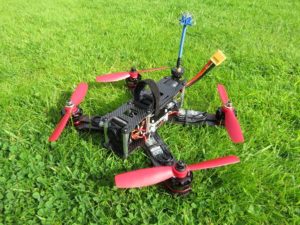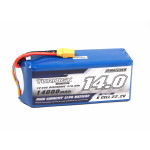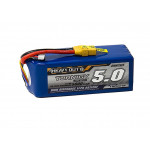
Many new pilots are looking for advice on what to buy when it comes to multirotors.
The sheer amount of choice on the market at the moment can be overwhelming and there is no perfect model for every pilot (despite what a few in the forums may tell you!). Choosing the right model depends on having a clear idea of how you want to use it, the size of the model you want, how experienced you are as an R/C pilot, how comfortable you are with things like radio setup, how much of the kit like LIPO chargers you have already and how much you want to spend. Many pilots want to try FPV but may also need to learn the basics of the line of sight (LOS) flying too. In this article, we will look at some of the things to consider and, hopefully, by the end you will have a better idea of what you should be looking for in your next model.
New pilot?
 The first consideration, and one of the main ones, is can you already fly a multirotor? I’ve talked to many pilots who invest in hundreds in a model and radio and then have nothing but a collection of broken pieces within the first 30 seconds. I did it with my first 4 channel R/C helicopter – you watch the YouTube videos of pilots and think ‘That’s not too hard’ and the next thing you know you’re standing over the remains of what only a few minutes ago was a beautiful new model. Crashing is part of learning and for those with less experience and cash, the best bet is to learn with a much smaller indoor model.
The first consideration, and one of the main ones, is can you already fly a multirotor? I’ve talked to many pilots who invest in hundreds in a model and radio and then have nothing but a collection of broken pieces within the first 30 seconds. I did it with my first 4 channel R/C helicopter – you watch the YouTube videos of pilots and think ‘That’s not too hard’ and the next thing you know you’re standing over the remains of what only a few minutes ago was a beautiful new model. Crashing is part of learning and for those with less experience and cash, the best bet is to learn with a much smaller indoor model.
Models like the Hubsan X4 and H36 are great as they take crashes very well, are cheap to fix, you can buy spare parts if needed and you can also take all of the lessons you learn with you as you progress onto larger models. If you Google ‘RADDS School of rotary flight’ and follow the lessons you’ll be a very capable LOS pilot in a few months. I still fly indoor quads through the winter to keep my muscle memory and practice in so even when you do trade up you will still find yourself flying around the house on dark windy days!
What do you want to use the model for?
You want to fly it right? One of the reasons that there are so many quadcopter models is that there are many different ways that pilots want from them. Do you want to learn to fly so are looking for something super stable and easy to repair? Are you looking for a model that is very agile and fast for flying FPV? Are you looking for a model that can carry a camera so you can film the countryside? Having a clear idea of how you want to use the model will help you decide what you want. I’ve found that models that have replaceable arms are great choices for almost all pilots as it’s the arms that tend to be broken in a crash and swapping the motor and ESC onto a new arm is a lot less work and hassle than having to replace an entire frame. Consider the space on the frame too. Smaller ‘racing’ models usually have to be creative with how things are installed to fit everything into the chassis. This can mean that to replace one piece means taking the entire model apart. Those models that are a little bit larger and more modular can help with easier repairs and pre-flight checks. It can also come in handy if you want to replace/upgrade something in the future too.
So what about all these flight controllers and motor/ESC specs?
 A lot of focus is put on the components in these models and rightly so, but this can be too much to consider when you are starting out. Experienced pilots and builders like to choose each of the pieces to make a model that suits them perfectly and match how they like to fly. I’ve not had a flight controller yet that has not been able to offer basic flight stabilization and things like self-level modes. The most current generation of flight controllers use an STMf3 or the newer STMf4 based processor and have lots of processing power to fly the model well. That assumes that the model is tuned well of course. Tuning is the process where you change the settings on the flight controller so that the performance and responsiveness suit the model and you as a pilot. Much of the latest generation of software now gets these settings close enough for decent flying without doing anything else to it. Models that come pre-built should be set up and tuned to fly better ‘out of the box’ than ones that are built from components but this isn’t always the case. Look for models/kits that have good reviews. I’d stay away from anything that is using older flight controllers now, anything based on the mature STMF1 processor like the Naze32 is now struggling to run the latest code like Betaflight and Cleanflight with any of the advanced options turned on.
A lot of focus is put on the components in these models and rightly so, but this can be too much to consider when you are starting out. Experienced pilots and builders like to choose each of the pieces to make a model that suits them perfectly and match how they like to fly. I’ve not had a flight controller yet that has not been able to offer basic flight stabilization and things like self-level modes. The most current generation of flight controllers use an STMf3 or the newer STMf4 based processor and have lots of processing power to fly the model well. That assumes that the model is tuned well of course. Tuning is the process where you change the settings on the flight controller so that the performance and responsiveness suit the model and you as a pilot. Much of the latest generation of software now gets these settings close enough for decent flying without doing anything else to it. Models that come pre-built should be set up and tuned to fly better ‘out of the box’ than ones that are built from components but this isn’t always the case. Look for models/kits that have good reviews. I’d stay away from anything that is using older flight controllers now, anything based on the mature STMF1 processor like the Naze32 is now struggling to run the latest code like Betaflight and Cleanflight with any of the advanced options turned on.
Most models now have good flight characteristics and good choices for motors and ESCs to give decent flight performance. The rule of thumb is that models with larger props and lower KV motors are made more for endurance flying while those with smaller props and higher KV motors are built for speed and maneuverability; often the size of the arms on the frame is the limiting factor. Modern frames are designed with specific motors and prop sizes in mind – read up on them before making a choice. Unless you are a proficient, experienced multirotor pilot the default settings on a model will usually be great to start with. As you become more experienced and your skills increase you can start to tweak the settings to match your needs and keep up with you as your skills improve. A poorly setup quad will always be hard to fly well if at all but with the latest generation of flight controllers, software, ESCs and motors it’s getting harder and harder to make a model that won’t fly ok the first time (as long as you follow a build series – there are lots on YouTube designed for beginners).
How happy are you with things like Radio programming and using a PC?
 Building a model, even some of the ones that come ‘ready to fly’ involved some work on a computer and radio to set up the model to be how you want it. The most basic of these settings is the flight modes you want. A new pilot may want to fly in self-level (often called Angle) mode, while more experienced pilots may like to fly in a self-level mode that also allows for tricks and rolls (called Horizon on many flight controllers) and those pilots who can really fly will fly in ‘Rate’ mode with as little support from the flight controller as possible. All of the flight controllers connect to a computer using a USB cable and they have a companion piece of software that you use to set up the model. My first quad was built for me as I wasn’t confident in building my own but once I repaired it a few times I started to feel happier about building one. There are lots of great videos and instructions from the community online to help a builder and it’s a great feeling flying a model you made. Sounds tricky? If so then an RTF kit may be a better choice to start with until you have a better grasp of some of the pieces.
Building a model, even some of the ones that come ‘ready to fly’ involved some work on a computer and radio to set up the model to be how you want it. The most basic of these settings is the flight modes you want. A new pilot may want to fly in self-level (often called Angle) mode, while more experienced pilots may like to fly in a self-level mode that also allows for tricks and rolls (called Horizon on many flight controllers) and those pilots who can really fly will fly in ‘Rate’ mode with as little support from the flight controller as possible. All of the flight controllers connect to a computer using a USB cable and they have a companion piece of software that you use to set up the model. My first quad was built for me as I wasn’t confident in building my own but once I repaired it a few times I started to feel happier about building one. There are lots of great videos and instructions from the community online to help a builder and it’s a great feeling flying a model you made. Sounds tricky? If so then an RTF kit may be a better choice to start with until you have a better grasp of some of the pieces.
Do you already own things like a battery charger?
Another consideration when looking at a quadcopter is how much of the extra pieces you’ll need you already own? Items like a decent radio and receiver, LIPO batteries of the right size and weight, and additional pieces like LIPO balance chargers are all needed. Many RTF models now come with the model, the basic spares, and also include the battery, radio, and even a simple charger to get you started. Look at the kit contents when you are looking to place the order. The pieces you get with the RTF model may be outgrown in a few months as you progress in the hobby but are far cheaper and less risky than trying to get the model to work with other pieces you’ve purchased. For a more experienced pilot who has already made the investment in a good radio and quality balance charger, this additional expense isn’t needed so an ARTF model that needs a radio receiver and battery may be a better option. Support is a big part of this too. Even suppliers of items like flight controllers are reluctant to exchange a seemingly faulty item if the pins have been soldered onto it, getting support from them for a problem with the entire model, once built, is next to impossible. Buying the RTF of ARTF kits from vendors provide you with a place to go for help and advice if something isn’t working. I paid the extra in the early days for this peace of mind, knowing that if I plugged it in and it didn’t work I could return it. Hard to do when you’ve snipped half of the wires off and made a customer wiring loom for the model.
How much money do you want to spend?
And finally the big question. Some of the larger models can cost a lot of money and include GPS features and advanced flight controllers with simple radios to get the pilot in the air faster. I’ve helped many pilots learn to fly and there is a number who find the complexity of learning to fly a multirotor tricky, some struggle with motion sickness when flying FPV, others find that the novelty of a quadcopter wears off after a few weeks while others (like me) become hooked on the flying and building and end up with many models.
There is a danger in the hobby that a new pilot/prospective pilot can spend way too much money too quickly and buy things they don’t need and quickly grow out of. If you live in a heavily urban area then finding a place you can fly outdoors safely may require extra time and include travel so investing hundreds in a huge camera hex-copter probably isn’t a great idea as you’ll not get to fly it often. Starting with a smaller model helps you learn if you enjoy flying a quad and relish the challenge, once you’ve got the basics covered then upgrade to a larger model, either an RTF or a kit if you like building and feel comfortable tacking the project. Choose a model that will serve a few purposes. Commonly the main ones early in the hobby for many pilots is a model that had good handling and performance, includes an FPV system, and is easy to fix. This provides a great platform to learn to fly the larger frame, explore FPV outside, and even try tricks and flips.
Summary
There isn’t a perfect model/package for every pilot. If you’re new then a smaller model is ideal to learn to fly with, following that an RTF model can be great. If you already have practiced and can fly then looking at models that more closely match what you want to do with them and how you want to fly is a great option. For those who love building then there are many kits that come with most of the things you need to get flying too. Read the reviews from other pilots to see how well the model flew and their experiences with things like the performance, flight times, FPV kit, and build quality. Remember that the person writing the review may have a different point of view from you though. My advice is to start small, get a cheaper indoor model, and see if it’s right for you. I’ve had friends who’ve tried it and didn’t like it, others who like flying LOS but can’t get to grips with FPV. Trying these things out cheaply before investing huge sums of money can be a good idea. Finally, when asking for advice for the best frame/motor/ESC/flight controller/Model/RTF kit – opinions are like belly buttons everyone has one but only one is right for you. Happy flying! Written by Painless360
Hear it First: Join our Mailing List
Sign up to receive new product updates, exclusive discounts, news, and more!







